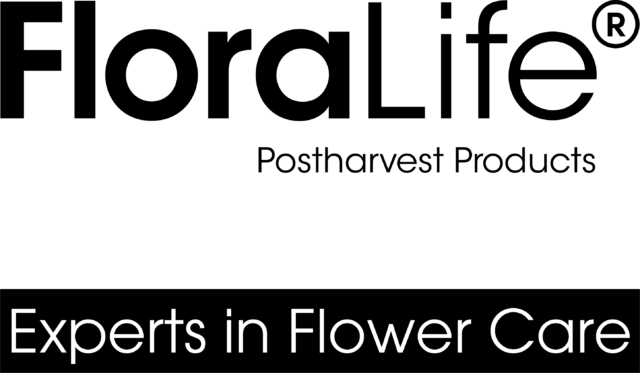Ethylene Damage in Flowers and Plants
Florists’ Review Magazine February 2021, powered by FloraLife
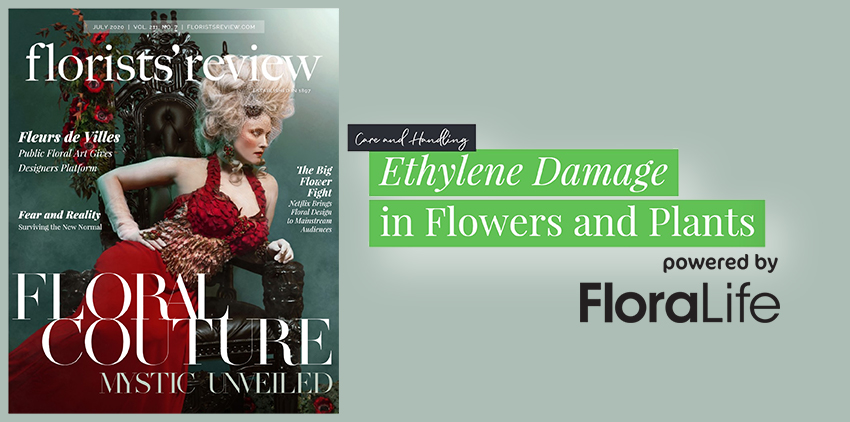
When it comes to common ailments and injuries affecting cut flowers and plants, an ounce of prevention is worth a pound of cure. These unfortunate flower conditions directly impact your bottom line – specifically, a product you cannot sell and corrective action in your shop that distracts your team from income-producing activities.
A usual suspect when it comes to common ailments is ethylene. On average, ethylene related issues cause at least 30% of flower waste. But what is it and why is it bad?
Ethylene is the “silent killer” in floriculture. It is a gaseous plant hormone that is colorless, odorless and is present at undetectable levels in normal atmosphere unless you use sophisticated instruments to detect it. As many hormones do, it takes fairly low concentration of this chemical to cause drastic effects on plants.
For the most part, ethylene is produced by ripening fruits and vegetables, and by flowers. It is also a byproduct of “incomplete combustion” of organic materials. You can find “hot spots” where the concentration of ethylene is hundreds if not thousands of times higher compared to the usual concentration. These hot spots in the cut flower distribution chain are typically places like distribution centers and storage facilities where flowers and fruits are stored together. Or they could be areas where natural gas driven forklifts and other equipment are in operation, or even areas where old and decaying plant materials are not removed fast enough.
During the postharvest phase of cut flowers, the effect of ethylene is almost always negative, and drastically reduces the quality and ornamental value of flowers. It is inevitable that most of the cut flowers will go through these “hot spots” during the distribution and storage phases. So, the likelihood of ethylene damage is very high, unless the flowers are properly treated along their journey to the final consumer.
The sensitivity of cut flowers to ethylene and the damage caused by it vary a lot depending on the genetics of the species or varieties. Given the invisible nature of ethylene, detecting ethylene symptoms is critical. Furthermore, some of the ethylene symptoms can be caused by other factors (e.g. dehydration, cold chain violation, etc.). Therefore, the cause could be misdiagnosed.
A typical ethylene symptom of Carnations is called “petal in-rolling” as shown in the picture below.

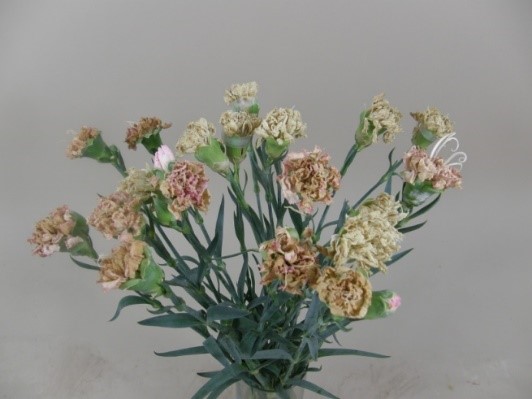
Typical symptoms of ethylene damage of popular cut flowers are listed below:
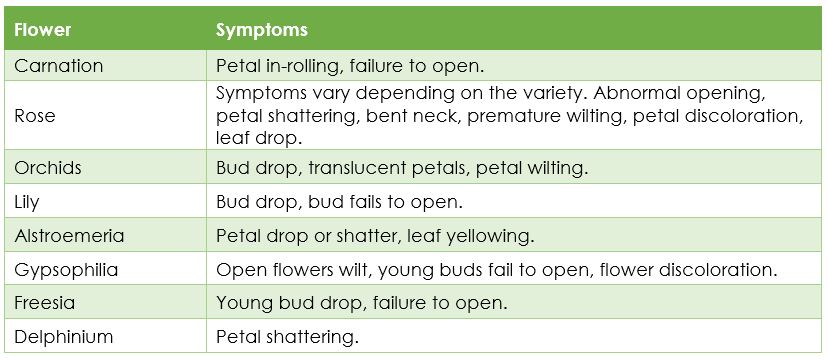
Examples of ethylene damage in pictures below (ethylene damage is shown on the right side of the pictures):
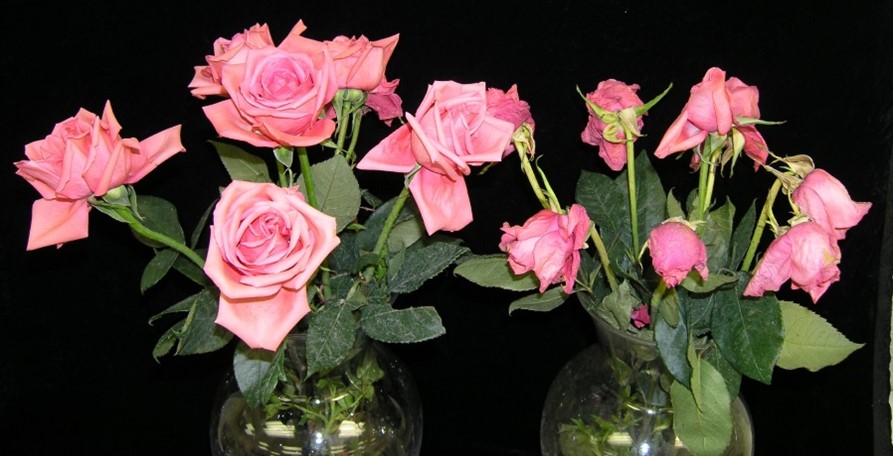
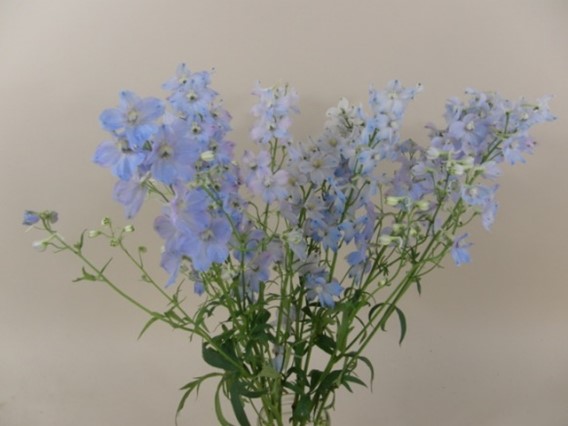
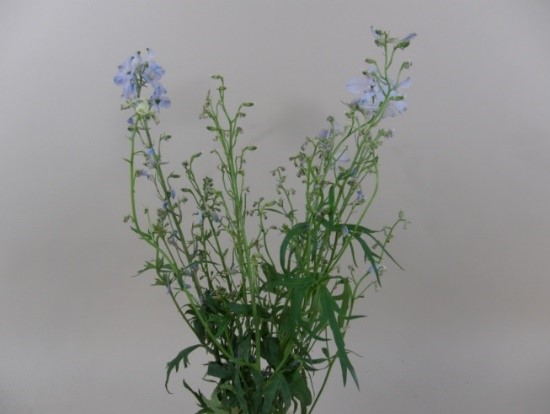
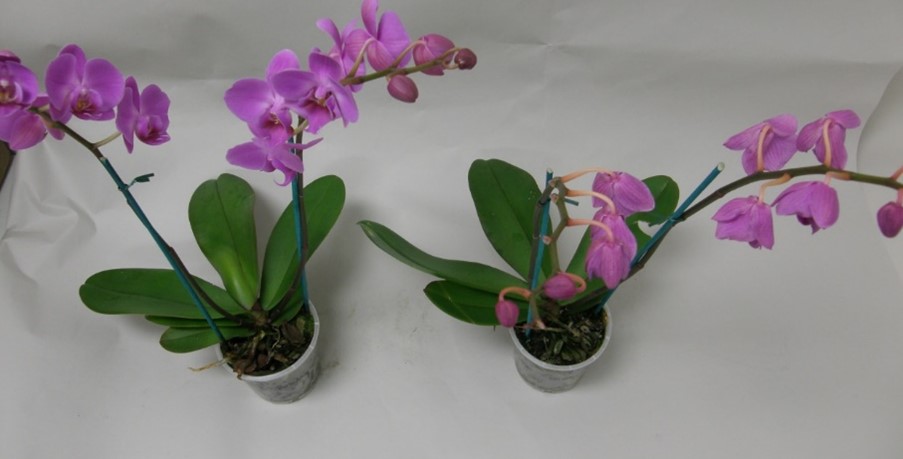
As you can see above, the effect that ethylene has on different crops is very different. Correctly identifying that the damage is due to ethylene is important.
Here are a couple of tips to avoid ethylene damage:
- Make sure to check that your flower supplier (grower, wholesaler, distributor, bouquet operation and/or trucking company) has treated the product with an ethylene action inhibitor, such as Ethylbloc™.
- Monitor temperature. A proper temperature in the cooler (around 34 to 38 F) can inhibit ethylene production.
- Outside of the cooler, do not store or display near ripening produce or products that produce ethylene, such as propane heaters, diesel fumes, cigarette smoke, and “older” flowers.
EthylBloc™ Technology works by inhibiting the negative effects of ethylene and thus prevents or reduces premature flower death, leaf and/or flower fall, and leaf yellowing. The active ingredient in EthylBloc™ Technology binds to the ethylene receptor in plant cells. This prevents binding of harmful ethylene from the plant itself or external sources. It is the binding of ethylene to the receptors that causes damage — NOT the production of ethylene.
With these preventive steps, you too can enjoy healthier flowers AND a healthier bottom line!
To learn about best practices from the experts in flower care or to inquire about products and availability in your region, visit www.floralife.com or contact your local FloraLife representative.
*Product availability depends upon geographical region
